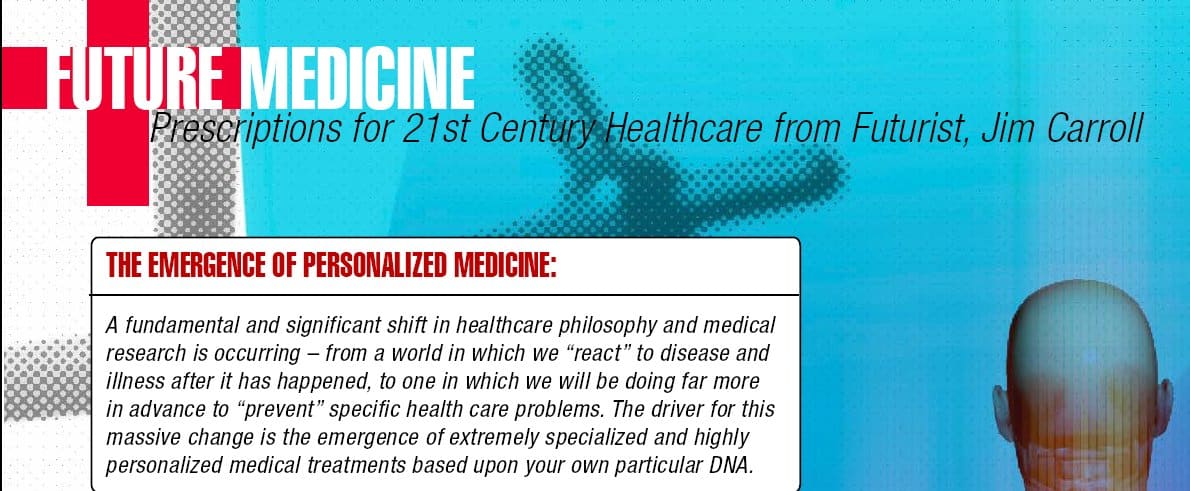I spoke in November in Iowa to a group of energy cooperatives, providing some different insight into the future of energy supply in terms of not what’s happening today, but in terms of “what comes later” — say, five, ten or fifteen years out.
Likewise, I’ll be speaking to the Healthcare Industry Distributors Association at the end of the month. Many of the folks in the room will be focused on the short term trends that surround them; they won’t be thinking about the massive transformation that is really going to impact their industry over the longer term.
 That’s the problem that people usually have when they try to figure out the future. They tend to focus on the the small, incidental, day-to-day, one-to-two-to-five year trends that they can see around them.
That’s the problem that people usually have when they try to figure out the future. They tend to focus on the the small, incidental, day-to-day, one-to-two-to-five year trends that they can see around them.
I take my time looking for the “big transformations” – the sweeping, massive, significant types of change that causes everyone to sit back twenty years later and ask, “Wow! Where did that come from?”
And in the world of health care and energy, that involves phrases such “preventative medicine” and “bio-refineries:” that’s where you’ll really find the future.
Consider, for example, the world of health care and life sciences. Certainly everyone is aware that current trends indicate that the challenges are vast and the opportunities are significant. There’s a looming shortage of skilled workers, dramatic rates of discovery of new knowledge, the rapid emergence of new medical methodologies, and other forms of significant change.
And yet, with everyone focused on these issues, most people are missing the big, long range transformation that is underway: we are in the midst of a fundamental and significant shift in healthcare philosophy and medical research that makes every other trend within this industry pale in comparison. We’re rapidly moving from a world in which we “react” to disease and illness after it has happened, to one in which we will be doing far more in advance to “prevent” specific health care problems from occurring in the first place.
 That’s one of the trends I’ve covered in my FUTURE MEDICINE Prescriptions for 21st Century Healthcare trends summary.
That’s one of the trends I’ve covered in my FUTURE MEDICINE Prescriptions for 21st Century Healthcare trends summary.
The driver for this massive change is the emergence of extremely specialized and highly personalized medical treatments based upon your own particular DNA. Preventative medicine has already become a part of the health care system: for example, a simple pap smear test has resulted in a 70% reduction in the date rate from this disease. Yet, it is estimated that clinical diagnostic spending of this type makes up only 1% of global health expenditures.
DNA “sequencing” is set to change that, as it allows researchers to examine an individuals DNA, and determine their risk for developing particular diseases or medical problems. Already, a test has been developed that examines a few hundred strands of DNA, from which a prediction can be made of your risk of developing cystic fibrosis. The test accurately identifies the unique DNA strand in 88% of Caucasian CF and 69% of African Americans. Expect the degree of accuracy to only continue to improve in coming years.
That’s but one example of a “deep transformation change” that gets little attention. Consider another critical industry: energy supplies.
In the last few years, we have certainly seen a lot of price volatility as a result of the unexpected, such as Hurricane Katrina, rapid new demand growth from Asia, and commodity market fluctuations often driven by speculation. One result of volatility has been a renewed interest in bio-fuels, and in particular, the opportunity that exists from the creation of ethanol from corn and other crops. Ethanol has grown quickly to become a rather significant industry; and yet, what we are seeing today involves only baby steps.
The big transformation that is occurring involves a rapid changeover from “first stage” bio-energy companies to “second stage” bio-refinery companies.
The first stage consists primarily of agricultural companies, using their insight into the science of agriculture to develop production systems that convert grain to ethanol. The second group are the big oil companies, who are bringing to the industry their insight into how to build big, production oriented, cracking and distillery methodologies to the world of ethanol. In doing so, they will be transforming a high velocity industry into an faster and more complex industry involving “bio-refineries.”
The transition is both massive and seeping in scope. Royal Dutch Shell Europe, for example is involved with a “2nd generation” project that involves a capital investment of $2,000 per ton to construct, compared to $190 ton for a first generation bio-fuel plant.
The switch to bio-refineries will be significant, with some estimates suggesting that the oil major will be able to grab upwards to 17% of the global biofuel market within a few short years.
It’s by watching for and identifying such massive shifts : a switch from reactive to preventative medicine, or the emergence of a bio-refinery industry, that you can spot real areas for innovation and creativity.
That’s why, when looking at the big picture, you should always step back and look for an even bigger picture.




GET IN TOUCH
Jim's Facebook page
You'll find Jim's latest videos on Youtube
Mastodon. What's on Jim's mind? Check his feed!
LinkedIn - reach out to Jim for a professional connection!
Flickr! Get inspired! A massive archive of all of Jim's daily inspirational quotes!
Instagram - the home for Jim's motivational mind!